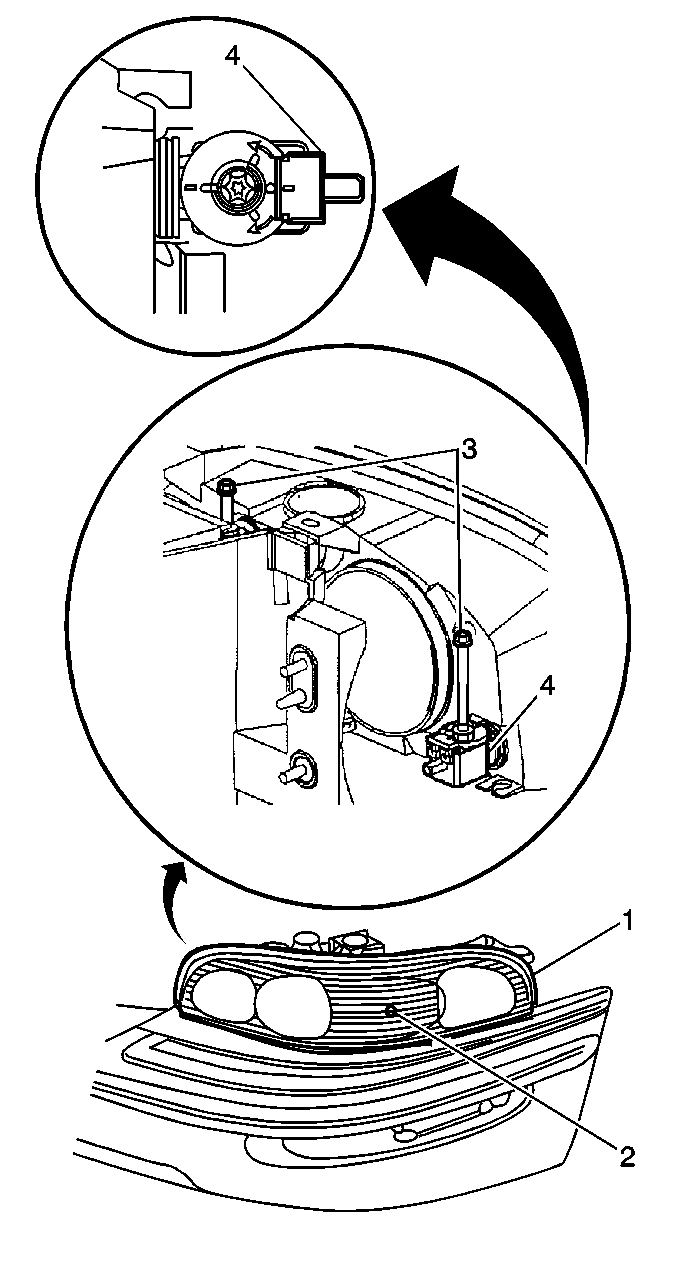
Properly aim the headlamps (1) in order to obtain the maximum road illumination and safety that has been built into the headlamp system. Proper aiming is important with composite headlamps. Composite headlamps increase the range and the power of the headlamps. Slight variations from the recommended aiming may be hazardous to approaching motorists. Composite headlamps do not require aiming after the bulb has been replaced.
When you inspect the headlamp aim, ensure that the vehicle is at the normal weight with the following items:
| • | The fuel |
| • | The oil |
| • | The water |
| • | The spare tire |
Ensure that the tires are uniformly inflated to the specified pressure.
If the vehicle will regularly carry an unusual load in the rear compartment, or a trailer, ensure that the load is on the vehicle when you inspect the headlamps.
All states have requirements for headlamp aiming. Ensure that you follow the individual state requirements.
Inspect the headlamp aim when you install a new headlamp assembly. Inspect the headlamp aim if service or repairs to the front end area have, or may have, disturbed the headlamps or the mountings.
The headlamp focus is set when the unit is made. Adjusting the focus is not necessary, or possible.
Some state and local laws specify the requirements for the headlamp aim. Follow the state and the local laws.
An adjusting screw (3) on the outer side of the headlamp assembly adjusts the horizontal aim. An adjusting screw (3) on the top center of the assembly adjusts the vertical aim. Follow the manufacturer's instructions when using the mechanical aimers.
Perform the following steps in order to prepare the vehicle for aiming the headlamps:
- Completely assemble all of the components.
- Place the vehicle on a level pad or surface.
- Stop all unnecessary operations or work on the vehicle that affects the vehicle trim.
- Close the doors.
- Stabilize the suspension.
- Ensure that the fuel level is at a 1/2 tank or less.
- Ensure that the tires are inflated to the proper pressure.
